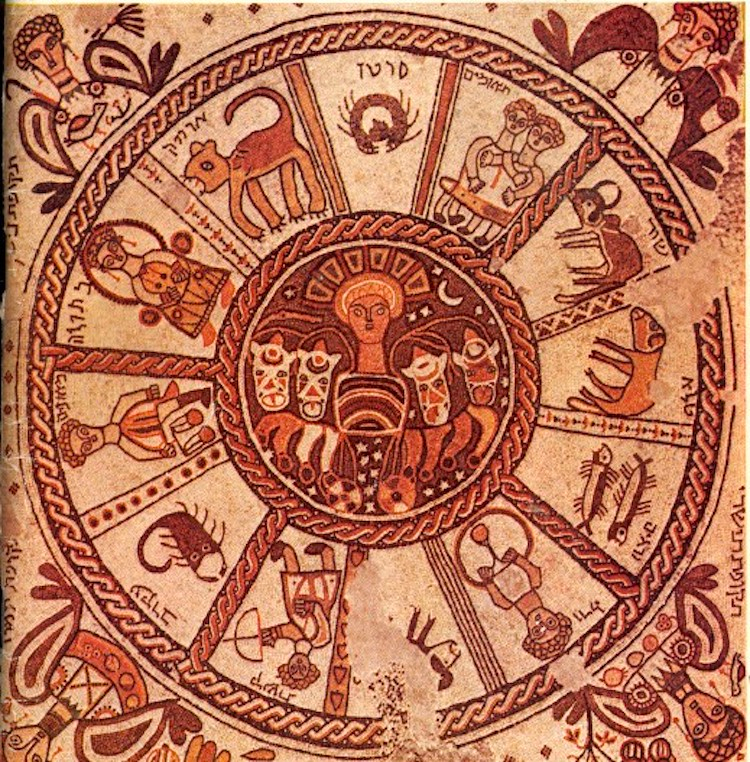
Charlotte Zhu, 30 November 2023
Introduction: Origins and Development (1st century BCE - 7th century CE)
Introduction: Origins and Development (4,500 BCE - 7th century CE)
Historical Background: Social and Political Context
Astrological Calendrical Systems
Veneration of stars is a fundamental trait commonly shared by ancient civilizations. Astrology, which explores the relationships between celestial phenomena and earthly events, has profoundly shaped the spiritual and cultural histories of both Eastern and Western societies. Throughout history, humans have sought guidance and inspiration in the starlit sky. Astrologers, who analysed the movements of celestial bodies, and other phenomena such as comets, contributed to the development of astronomy and mathematics. The history of astrology provides useful insights into the interactions between science, philosophy, and spirituality across various cultures.
Among the astrological traditions, the Hellenistic system (named after the predominantly Greek civilization that spread over parts of Asia after the conquests of Alexander the Great 356-323 BCE) which dates from the first century BCE, is regarded as fundamental., as it influenced the Arabic, Indian, and Chinese astrological systems. Its content on the earlier Mesopotamian planetary system and partition of the sky, and the Egyptian calendars. The Greeks developed a more scientific and comprehensive astrological system that incorporated mathematics and astronomical knowledge.
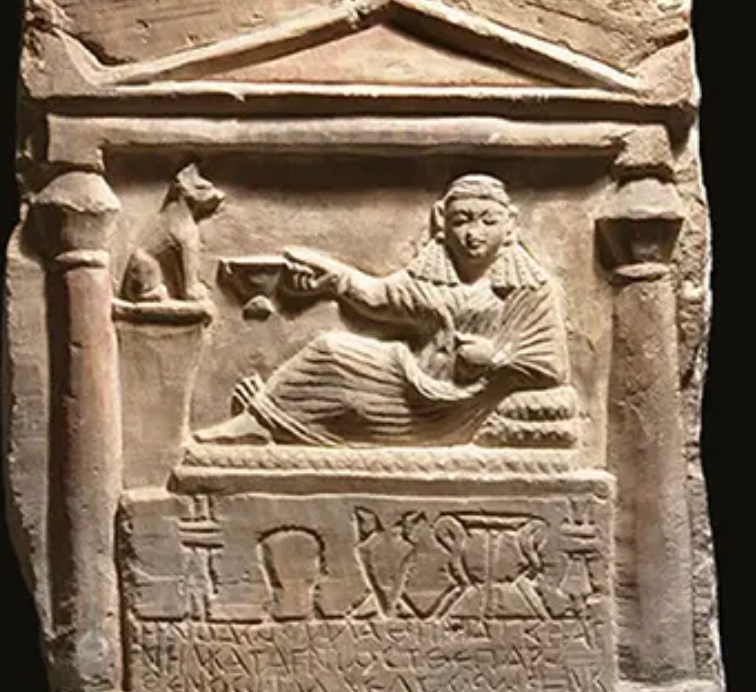
Fig 1. Heliodora, the first known female hellenistic astrologer ➤
Arab astrology was profoundly influenced by the Hellenistic tradition. It was introduced in the Arab world during the so-called Islamic Golden Age, from the seventh to thirteenth centuries CE. The Abbasid Caliph al-Ma’mun (786–833 CE) ordered the translation of Greek texts on various disciplines, including mathematics, astronomy, and philosophy into Arabic. In the later Vedic period (1500–500 BCE), Mesopotamian astrology was introduced into India, leading to a belief in prognostications and omens. Unlike in Mesopotamia, the primary focus in ancient India was on studying the movements of the sun and moon to develop an effective calendar. This influence of Hellenistic astrology is primarily seen in the transmission of astrological concepts, such as zodiac signs and planets aspects, and techniques during the early centuries of the Common Era, coinciding with the Indo-Greek period and the subsequent spread of Greek culture in the region.
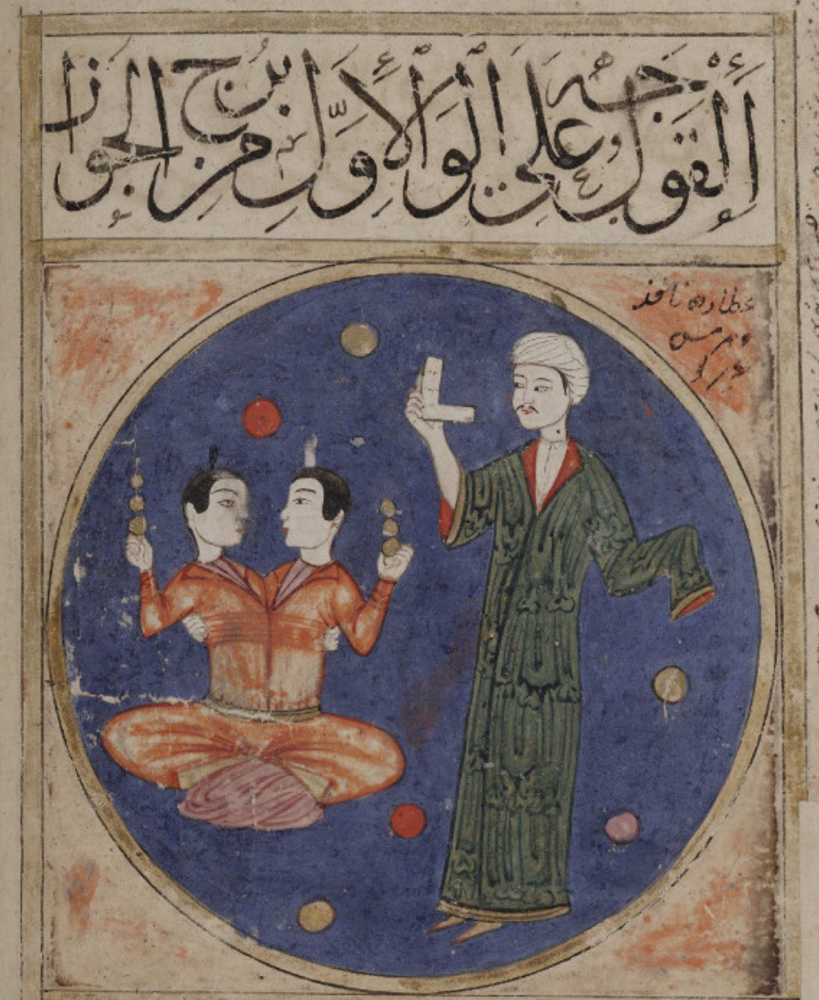
Fig 2. Gemini, or al-Gawāz. Page from a manuscript known as Kitab al-bulhan or “Book of Wonders’ ′ held at the Bodelian Library. Shelfmark: MS. Bodl. Or. 133
In ancient China, nature veneration included the worship of the Big Dipper, one of the earliest religious practices. Dating back to the Shang Dynasty (1600–1046 BCE), this practice evolved into a form of divination based on star movements. The Tang and Song Dynasties witnessed the integration of Indian, Arabic, and Hellenistic astrological elements into Chinese astrology, forming the basis of the system recognized today.
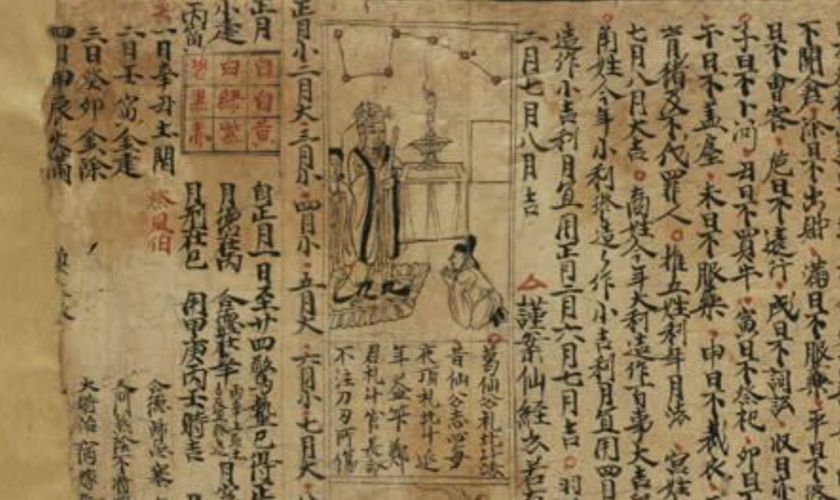
Fig 3. Chinese manuscript with the Big Dipper
From the late nineteenth century, there was a noticeable shift towards integrating spirituality and psychic phenomena into astrology, particularly with the rise of the New Age movement. This led to the emergence of modern astrology, which delves into psychology, adding new dimensions to the astrological perspective.
Despite its seeming popularity today, astrology has a complex historical trajectory marked by recurrent instances of prohibition due to political or religious factors. The seventeenth century, a flourishing era of science, witnessed the classification of astrology as ‘superstitious’ in the eyes of the public, which led to the disappearance of astrology for hundreds of years. Nowadays, astrology merely occupies a niche within academia. Fortunately, since the latter part of the twentieth century, a growing number of astrologers have dedicated themselves to reviving ancient astrological texts. At the same time, an increasing number of scholars mainly from the science and culture fields have advocated for its revival.
The origins of Hellenistic astrology remain uncertain and have been debated among scholars. Some posit origins in Mesopotamian and ancient Egyptian astronomy1. Others assume that an independent development occurred in ancient Greece since various techniques differ from Mesopotamian and Egyptian astrology2. Scholars have traditionally attributed the origins of Hellenistic astrology to the Hellenised culture of Alexandria (late fourth century BCE to the early first century CE). This is often based on a group of astrological works with complex theories that are difficult to date accurately. However, the earliest indication of Greek interest in the heavens can be traced back to the poem Works and Days by Hesiod, composed around 700 BCE. This work links the emergence of specific constellations to the agricultural calendar. While Mesopotamian elements were included in the early stages of Hellenistic astrology, the fundamental nature and reasoning behind Greek astrology are entirely a product of Hellenistic Greek culture.
Rochberg3 noted that the Babylonians bequeathed several foundational concepts to Hellenistic astrology4:
1. Planetary exaltations: This term refers to the discussion of a planet’s functionalities based on its zodiac signs.
2. The micro-zodiac (δωδεκατημόρια): This concept involved dividing each zodiac sign into smaller sections, with each section encompassing two and a half degrees.
3. Trine aspects: This refers to the favourable alignment of two planets existing in the same elemental zodiac signs, for example, Mars in Aries and Jupiter in Sagittarius form the trine aspect.
However, some scholars believe this system originated in ancient Greece, even though the archaeological findings point to Mesopotamia. This theory arises from the fact that there was communication between these two regions. Since the theory of planetary exaltations is closely tied to domicile and aspect theories, it is considered more likely to have been developed within Hellenistic astrology.
The term ‘Hellenistic’, derived from Greek, can be understood to mean ‘pan-Greek’ which signifies a series of cultures impacted by ancient Greece. It commonly refers to the era that began after the death of Alexander the Great (323 BCE) and the conquest of Egypt by Rome (30 BCE), when Greek culture spread to the East and blended in with other civilizations, following the conquests of Alexander the Great.
In regions predominantly influenced by Hellenistic culture, there was a tendency to preserve the city-state (polis) structure. Moreover, these areas often showed a proclivity towards synoecism—a process that entailed the unification of smaller communities into a newly formed polis. In asserting their dominion over urban locales, Hellenistic monarchs frequently appointed a resident official, known as an epistatēs. This assertion of authority was generally executed with considerable finesse and diplomatic skill. During periods when mainland Greece enjoyed a measure of independence, democratic systems were sporadically established, as exemplified by the Ptolemies’ sustenance of democracy in Cos. However, it was more commonplace for both Hellenistic rulers and their Roman successors to promote either autocratic or oligarchic forms of governance. Notably, during times of instability within the ruling echelons, there are intriguing indications—derived from documents uncovered in Oxyrhynchus and dated to the late 3rd century CE—that these classes resorted to methods of prophecy, presumably driven by apprehensions and uncertainties.
The economic landscape underwent a significant transformation following Alexander the Great’s expansive conquests, which catalysed an extensive increase in trade interactions with regions such as East Africa, Arabia, India, and China. This period marked the integration of formerly disparate polis into a singular, cohesive empire, effectively diminishing barriers that previously impeded trade exchanges. Concurrently, during the second century BCE, the expansion of Chinese military prowess into Turkistan played a pivotal role in enhancing trade along the renowned Silk Road, traversing Central Asia. This era also witnessed substantial advancements in cross-continental trade infrastructure, markedly improving the accessibility and efficiency of both maritime and overland routes for the transportation of goods.
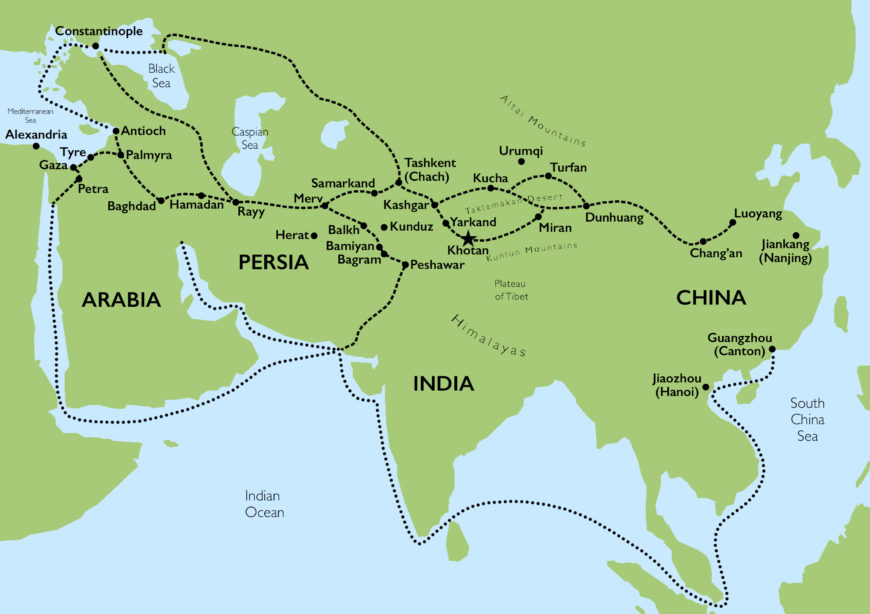
Fig 4. The Silk Road
As a remarkable era of intellectual flourishing, it made significant contributions to various scientific fields, particularly medicine, astronomy, and mathematics. This period was marked by an unprecedented expansion in knowledge and understanding, deeply influenced by the pioneering work of Aristotle. Aristotle, a disciple of Plato and mentor to Alexander the Great, is often celebrated as the inaugural great biologist. His comprehensive examination of the living world laid a foundational groundwork that proved invaluable to the medical field.
The city of Alexandria, a hub of intellectual and scientific activity, continued to be a significant centre for medical teaching and research even after the Greek world came under the dominion of the Roman Empire. This enduring legacy underlines the profound and lasting impact of Greek medical knowledge. The medical teachings and practices developed during this period remained predominantly Greek in nature, underscoring the Hellenistic period’s substantial contribution to the advancement of medical science. This era, therefore, stands as a testament to the enduring legacy of Greek scholarship in shaping the contours of early scientific thought and practice.
The philosophical underpinnings of Hellenistic astrology were markedly shaped by an array of philosophical and religious doctrines prevalent during the period. Broadly, this astrological thought can be categorised into two principal currents: one emphasising planetary causation and the other focusing on determinism. These two streams collectively represent the diverse intellectual influences that moulded the astrological practices and beliefs of the Hellenistic era, reflecting a synthesis of various philosophical and religious perspectives5.
Plato (427–347 BCE), while not an astrologer per se, contributed philosophically to the development of astrology. In his dialogue Timaeus, he exhibits an understanding of omenic astrology. The dialogue features a critique of astral divinatory practices that lack the foundation of astronomical calculation (logizethai) and a celestial model (mimêmaton). Plato’s philosophical stance suggests that ethical and social conduct should, to some degree, align with the principles observed in the astrological cosmos. Within this foundation, astrology emerges as an instrument for the elevation of souls, offering a pathway to comprehend the divine intellect and the realm of eternal reality, thereby achieving a state of cosmic harmony. Furthermore, insights derived from the configurations of planets, as per Platonic thought, possess the potential to enhance human life by guiding individuals toward more informed and fulfilling life choices.
Aristotle’s (384–322 BCE) cosmological framework, deeply rooted in the early Greek cosmology of Hesiod (ca. end of 8th century BCE), established a foundational schema with its portrayal of planetary bodies, constellations, and zodiacal spheres (see Fig 2). This model was further elaborated by Ptolemy (ca. 100–170) in his seminal work, the Tetrabiblos. Ptolemy introduced the paradigm of four primary qualities — cold, hot, dry, and wet — and postulated the direct or indirect exertion of planetary movements upon terrestrial phenomena. This perspective positions celestial bodies as instrumental in precipitating earthly events, effectively situating astrology within the realm of physics and, broadly speaking, within the natural sciences. This conceptualization underscores the interconnectedness of cosmic and terrestrial dynamics, aligning astrology with the principles of physical causality.
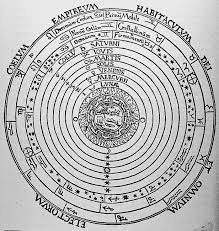
Fig 6. The Aristotle-Ptolemaic Universe Model
Stoicism, which originated in the fourth century BCE, also significantly influenced the development of Hellenistic astrology. Central to Stoic philosophy was the concept of a preordained cosmos, orchestrated by a Cosmic Intelligence or Mind. In this philosophical context, planets were not viewed as causal entities but rather as signifiers of terrestrial events. Within the realm of astrological interpretation, Stoic thought posited that while the general nature of events is predestined, the specific manifestations of these events could vary in severity and impact, ranging from the trivial to the significant. This nuanced perspective underscores the Stoic view of a deterministic yet variegated universe, where cosmic indicators shape, but do not rigidly dictate, the course of earthly happenings.
Christianity’s historical engagement with astrology is marked by complexity and contention. At the heart of Christian doctrine is the notion of human free will, conceived as a reflection, albeit on a diminished scale, of God’s absolute freedom of will. Humanity, as per Christian belief, often finds itself ensnared in sin and the trappings of the material world. Divine intervention, however, is sometimes believed to aid in the exercise of human free will. Consequently, early Christian polemicists and theologians frequently found astrology to be antithetical to Christian doctrine, primarily due to the perceived immorality inherent in its fatalistic tenets. Notwithstanding, in matters of natural phenomena, such as meteorological conditions, and the behaviour of those not enlightened by faith, astrology was considered to have a degree of applicability and validity. This dichotomy underscores the nuanced position of astrology within Christian thought, balancing theological principles with the recognition of astrological influence in certain worldly aspects.
In early Chinese astronomical studies, the genesis of celestial charts can be traced to approximately 4500 BCE. This period marks the discovery of the earliest known constellation map in Puyang, which vividly portrays a multitude of celestial configurations. Notably, this ancient stellar chart includes representations of the Big Dipper6, the Black Dragon, and the White Tiger. These celestial figures are integrally linked to the 28 lodges (Xiu 星宿), which are pivotal in the ancient Chinese methodologies of measurement and the calculation of seasonal cycles7. The concept of the 28 lodges, serving as lunar stations along the equatorial plane, plays a crucial role in tracking the lunar trajectory. These lodges bear a resemblance to Western constellations, centred by the Big Dipper. This rudimentary astrological structure laid the groundwork for the evolution of the Chinese astrological system.
During the tumultuous era of the Warring States, extending from the fifth century to the early third century BCE, the seminal work Heguanzi 鹖冠子8 was composed. This text elucidates the Big Dipper’s correlation with the 24 solar terms and the 28 lunar mansions, highlighting the orientation of the Big Dipper’s handle as an indicator of seasonal transitions.
The Wei and Jin Dynasties, spanning from the third to the fifth centuries, witnessed the maturation of Taoism, a period during which the Big Dipper’s religious significance was not only assimilated but also amplified within Taoist practices. This development signified a profound integration of the Big Dipper into the religious and cultural milieu, mirroring the evolving spiritual exigencies of Taoist rituals and spiritual cultivation.
The Tang Dynasty (618–907) heralded the introduction of horoscopic astrology in China, a development largely attributed to external cultural influences. Postdating the Eastern Han Dynasty (25–220), this epoch marked the initial stages of the integration of Buddhism and other foreign cultural elements into Chinese society, a culmination of which was observed in the Tang Dynasty. This era was characterised by the introduction of Indian astrology, deeply intertwined with Buddhism, spanning from the Eastern Han to the Northern Song Dynasty (960–1127). The early Ming Dynasty (1368–mid-15th century) was marked by the assimilation of Arabic astrological knowledge, notably through the scholarly endeavours of figures such as Mahatma. Subsequently, the late Ming (16th and early 17th centuries) and early Qing (1644–early 18th century) Dynasties experienced an influx of European astrological concepts, predominantly disseminated by Jesuit missionaries. Consequently, Chinese astrology evolved into a distinct synthesis, incorporating elements from Hellenistic, Arabic, and Indian astrological traditions.
In the context of Chinese cosmology, Heaven was perceived as a supreme existence, possessing an incomprehensible will beyond the full grasp of human understanding. As such, esteem was accorded, and compliance with its cosmic laws was sought through the detailed observation and study of astronomical phenomena9. This deep-seated esteem within Chinese culture elucidates the pivotal role of astrology in the realm of monarchy. The ideology posited that the celestial mandate, or the right to rule, was bestowed upon the emperor by Heaven.
Historical evidence, tracing back to the Zhou Dynasty (1046–256 BCE), suggests that celestial events were interpreted as signs of divine endorsement for the legitimacy of an emerging political power10. For instance, Zuozhuan 左传11 articulates, “If a solar eclipse occurs, it signifies a caution regarding the emperor’s morality. The imperial administration should respond by sounding drums at the altar as an act of repentance and distributing financial relief to the populace (日有食之,天子不举,伐鼓于社,诸侯用币于社,伐鼓于朝,礼也)”.
Despite astrology’s significant influence throughout history, there was a persistent effort by imperial families to monopolise knowledge of these celestial omens, ostensibly to obscure the ‘will of Heaven’ from public discernment.
The earliest forms of ancient Chinese astronomical literature manifested through oracle bone inscriptions, overseen by specialised institutions from their inception. Throughout successive dynasties, dedicated organisations were established to manage these astronomical documents. Although the names, scales, and staffing of these institutions varied across different eras, their overall structures and functions were largely similar. This led to the development of a systematic approach to the creation and administration of astronomical literature in ancient China.
In ancient times, the scale of astronomical institutions was initially modest. During the Western Han Dynasty’s Taichu Calendar12 reform, experts in calendrical science were temporarily summoned from various regions, but a permanent institution was not established. From the Tang Dynasty onwards, with more comprehensive documentation, the size of these astronomical institutions varied significantly across different dynasties, generally reflecting the reigning emperor’s interest and emphasis on astronomical affairs. For instance, in the Yuan Dynasty (1206–1368), the astronomical institutions included the Imperial Observatory 司天监, the Huihui Imperial Observatory 回回司天监, and the Taishi Yuan 太史院 (Office of the Imperial Astronomers), altogether comprising 259 personnel. This substantial number was attributable to the multi-ethnic nature of the empire and Kublai Khan’s (reigned 1260–1294) keen interest in astronomical matters. In contrast, the Ming Dynasty’s Imperial Observatory initially employed 41 individuals, but this number was later reduced, at times to as few as 23 people13.
With the advancement of astronomy, astronomical education emerged and developed. In ancient China, since astronomical knowledge was monopolised by the emperor, most astronomical education was officially sponsored. Before the Western Zhou Dynasty, the practice of scholarly officials guarding knowledge prevailed, with astronomy and calendrical calculations managed by Grand Tutors and shamans. These officials typically learned from their fathers, passing down knowledge through generations. During the Spring and Autumn and the Warring States periods (770–221 BCE), the prevalent methods of astronomical education included familial transmission, establishing schools for disciples, and hereditary official positions. Subsequent astronomical education largely followed this system. Statistical data shows that from ancient China until the early Qing Dynasty, among the 243 individuals who made significant contributions to astronomy and calendrical science, approximately 150, from the Western Han to the mid-Ming Dynasty, were results of official education.
In ancient China, the dissemination of astronomical and calendrical knowledge among the populace was strictly prohibited. However, as the kingdom in the Zhou Dynasty declined and official education deteriorated, private teaching of astronomy gradually emerged. Some individuals were naturally gifted and self-taught in astronomy, while others studied astronomy in private academies. Regardless of the method, these practices contributed to the development of civilian astronomy14.
Whether in official or private education, certain astronomical texts were necessary as learning materials. Personnel in official education could access firsthand astronomical archives, while civilian astronomers could study astronomical books. Texts like the Zhoubi Suanjing (ca. 1st century BCE) were even used as educational materials. The use of astronomical literature in education not only promoted the development of ancient astronomy but also facilitated the growth of ancient astronomers.
During the East Zhou Dynasty (771–221 BCE), the Big Dipper belief became increasingly prominent, as evidenced by numerous tombs from this era oriented with the deceased’s head towards the North, aligning with the Big Dipper, believed to be the abode of the soul. From the Western Han Dynasty (206 BCE–9 CE) onwards, there was a noticeable augmentation in both state and religious sacrifices. During the zenith of temple festivals, the Big Dipper, along with “Huang Ling” and “Houtu”, received equal reverence. This enduring significance is further highlighted by the fact that even when various other sacrifices were substantially reduced or prohibited, offerings to the stars persisted15.
The period extending from the New Dynasty to the Eastern Han Dynasty, spinning from 9 to 220 CE, saw the emergence of a plethora of Weishu literature, which imbued the belief in the Big Dipper with deeper philosophical and religious connotations. These texts associated the Big Dipper with a myriad of concepts, including lifetime, judgement of death, kingship authority, the pitfalls of victory, military preparedness, astrology, territorial division, and so on. Emperors of the time regarded the Big Dipper as the celestial ‘indicator light’ reflecting Heaven’s will, a guiding force for sovereigns in their governance. Adherence to the principles exemplified by the Big Dipper was seen as following the heavenly path, essential for the effective administration of the world.
During the Wei, Jin, Southern, and Northern Dynasties, from the third century to the end of the sixth century, Taoism underwent a significant maturation process, building upon the foundational beliefs of the Qin and Han periods. This era marked a pivotal evolution in religious traditions, with Taoism assimilating and advancing existing spiritual concepts. One such development was the transformation of the Big Dipper Belief, which, historically, encompassed a range of religious connotations including longevity, sovereignty, victory in combat, and astrological significance. This period saw a deliberate reorientation of the Big Dipper Belief to align more closely with the burgeoning practices and theological aspirations of Taoism, enhancing its applicability in Taoist spiritual exercises and augmenting its status within the religious hierarchy. Concurrently, the Taoist pantheon was formalised, leading to the Big Dipper’s conceptual metamorphosis into a deity of regal stature.
In the early Tang Dynasty, the emperors’ regime implemented a policy of equal reverence towards the three major religions16. This government endorsement catalysed further development and refinement of the Big Dipper belief within Taoist practice. During the Tang and Song Dynasties, Taoism elevated the Big Dipper’s status significantly, resulting in the establishment of a comprehensive and systematic set of doctrines and worship rituals centred around the Big Dipper. Many Taoists of this era espoused the belief that the Big Dipper governed human longevity and fortune, advocating that veneration of the Big Dipper could avert calamities, extend life, and attract prosperity. This period saw the emergence of a belief that the principles of all laws originated from the Big Dipper, leading to the formation and completion of the “Doumu17-Jiuhuang18” belief system during the Song and Yuan Dynasties.
At least during the Northern and Southern Dynasties (420–589), Buddhism was deeply influenced by Taoist star beliefs, “especially Buddhist esotericism and Eastern Esoteric Buddhism spread in Japan19.” In early Buddhist classics, the sun, moon, and stars are only located in the Four Heavenly Kings, the lowest heaven of the Desire Realm. After the Buddhist scriptures were introduced to China, they were influenced by Taoist star belief, so that star gods gradually became the ones who healed diseases and eliminated disasters, and were the objects of singing and sacrifice20.
The earliest documented references to celestial phenomena can be traced back to the ancient Chinese texts Zuozhuan 左传 and Guoyu 国语21. Additionally, the “Tianwen Zhi 天文志 (Astrological Divination)” of Shiji 史记 contains an extensive compilation of observations related to the divination practices involving the five planets. To align the representation of these five planetary divinations more closely with reality, thereby facilitating more accurate predictions of auspicious and inauspicious events, astronomers and astrologers began to study the dynamic movements of these celestial bodies.
During the Warring States period (ca. 475–221 BCE), astronomers De Gan and Shen Shi were among the first to observe and describe the retrograde motion of the five planets. They provided descriptions of the approximate conditions of Venus, Jupiter, Mercury, and Mars over a single synodic period, although some of these descriptions deviated from their actual astronomical behaviour. Their findings and observations are dispersed across several historical texts including “Shiji: Tianguan Shu,” “Hanshu: Tianwen Zhi,” “Hanshu: Lüli Zhi,” and the Tang Dynasty’s Kaiyuan Zhanjing.
Both the Gan and Shi families recognized early on the significance of planetary divination, subscribing to the belief that “if the five planets do not deviate from their paths, the year will yield abundant harvests.” A substantial advancement in the study of the movements of the five planets—specifically their phenomena of opposition, conjunction, occultation, visibility, direct motion, retrograde motion, and stationing—was achieved with the discovery of the Wu Xing Zhan (Five Planets Divination) silk manuscript in the 1973 excavation of the Mawangdui Han tombs. This text describes the positional changes of Jupiter, Saturn, and Venus over 70 years, from the first year of Emperor Qin Shihuang to the third year of Emperor Wu of Han, detailing the dynamics of these three planets within a synodic cycle22.
The practice of horoscopy in China necessitated meticulous calculations of planetary movements and the creation of ephemerides, drawing upon the principles of Chinese observational astronomy. Unlike the Mesopotamian system, which divided the celestial equator into 360 degrees and allocated 30 degrees to each zodiac sign, classical Chinese astronomy employed a division of 365.25 degrees (distinct from the Western concept of degrees). This differentiation in celestial measurement signified a divergence from the widely accepted Mesopotamian standard prevalent across Eurasia and Africa. Despite these differences, the rich legacy of celestial divination in China laid a receptive groundwork for the integration of foreign horoscopic practices, illustrating the dynamic interplay of indigenous and external astrological systems.
The concept of the twelve signs of the zodiac entered China at the latest during the Qi dynasty (479–502). The earliest Chinese source to mention the signs of the zodiac is the 56th text in the collection of Buddhist Scriptures Dafangdeng Dajijing 大方等大集經 translated by the Indian Buddhist Narendrayasas23.
A parallelism manifests in the calendrical systems utilised for astrological purposes in both ancient China and the Hellenistic world. These systems exhibit a deep interplay between celestial movements and temporal segmentation, underscoring astrology’s role as a timing technique in these cultures.
In the Hellenistic astrological tradition, the annual cycle commences at the point of 0 degrees Aries (see Fig 8), corresponding to the contemporary understanding of the spring vernal equinox. This marks the beginning of an astral journey where the Sun transits through twelve zodiac signs, each hosting the Sun for approximately a month. This zodiacal progression mirrors the changing seasons and pivotal celestial events throughout the year.
Remarkably, the commencement of each Hellenistic zodiac sign finds a parallel in the Chinese calendrical structure, specifically in the framework of the 24 solar terms (see Fig 7), comprising 12 Jie 节 and 12 Qi 气. For instance, the Hellenistic zodiac sign of Aries, usually spanning from 23 March to 23 April, aligns with the Chinese solar term from the Spring Equinox 春分 to the Waking of Insects 惊蛰. This synchronicity highlights a shared astrological perspective in interpreting and dividing the solar year.
The Hellenistic model of 12 tropical zodiac signs originates from 12 sidereal constellations, reflecting a deep engagement with stellar movements. Conversely, the Chinese system intricately weaves together lunar cycles, with the Big Dipper’s trajectory, and solar patterns, as evidenced in the formulation of the 24 solar terms. This confluence of lunar and solar dynamics in the Chinese astrological system showcases a unique approach to celestial timekeeping.
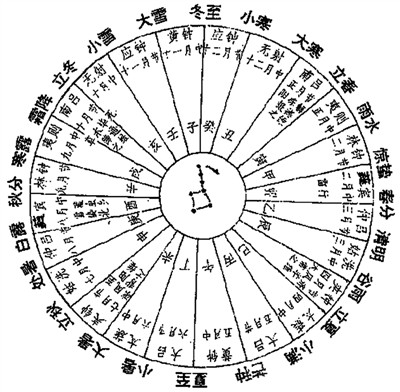
Fig 7. The 24 solar terms
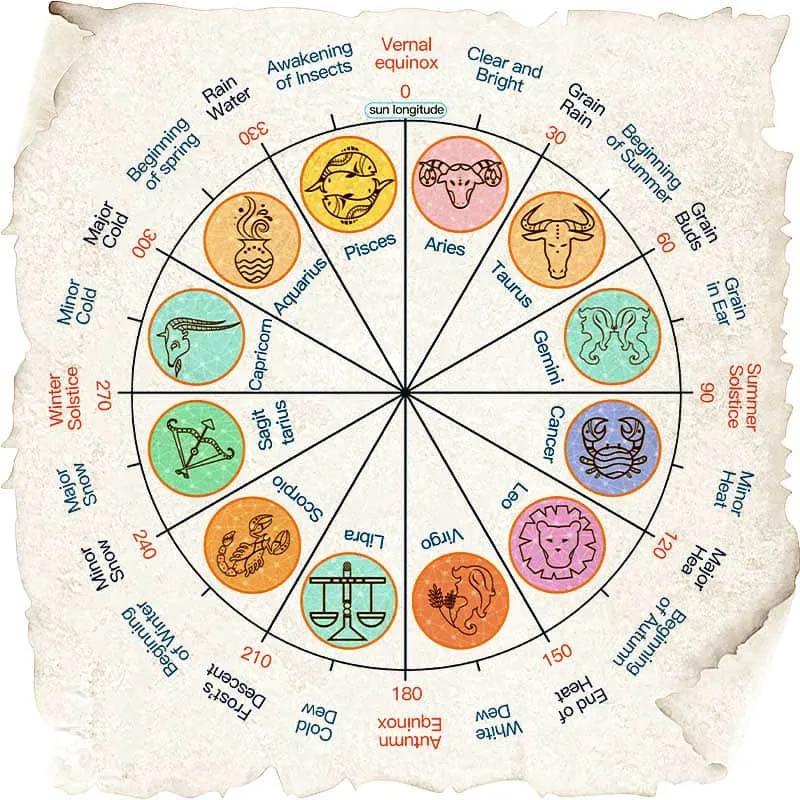
Fig 8. The relationship between 24 solar terms and the 12 zodiac signs
In Hellenistic astrology, the seven celestial entities — Sun, Moon, Mercury, Venus, Mars, Jupiter, and Saturn — are often referred to as the ‘seven planets’ or ‘wandering stars’ as a whole, although in practice, Sun and Moon often hold more significance than other five planets.
The prominent source elucidating the interpretations of these seven planets is Vettius Valens, an important second-century Hellenistic astrologer. His work Anthology comprises ten volumes in Greek and represents the most comprehensive and detailed extant treatise on astrology from that era.
Hellenistic astrology characterises the five planets as neutral24, malefic25 and benefic26, assigning distinct meanings to their transits across the twelve zodiac signs, such as “Aries is the house of Mars, a masculine sign, tropic, terrestrial, governing, fiery, free, upward-trending, semi-vocal, noble, changeable, procuratorial, public, civic, with few offspring, servile, the Midheaven of the universe and the cause of rank, two-toned (since the sun and the moon make white lichen)27.” Additionally, the specific configurations formed by these planets are believed to exert varied influences, such as “Mars, when allotted the hour or the Lot and in the Ascendant, urges men toward the military28.”
Turning to the historical context of astrological practices in China before the advent of Indian astrology during the Tang Dynasty, it is observed that these techniques were predominantly the preserve of the ruling elite, with limited dissemination among the general populace. The traditional Chinese approach to astrology, often termed judicial astrology, principally relied on the five planets called Wu Xing 五星, the Sun and Moon, and the twenty-eight lodges.
Historical records suggest that since the Han Dynasty, the practice of judicial astrology has consistently distinguished the Sun and Moon from the five planets in its interpretation of astrological significance and specific divination terms. For instance, the silk manuscript Wu Xing Zhan (Five Planets Divination), discovered in the Mawangdui Han Tomb, addresses the astrological implications and movements of the five planets. This manuscript details the individual significance and trajectories of each planet, as well as the meanings ascribed to their various conjunctions, excluding the Sun and Moon. This delineation reflects a conceptual framework in which the Five Planets are viewed as a distinct group, separate in status and nature from the Sun and Moon. Similar distinctions are also evident in historical texts like the Tianguanshu in Shiji29 and the Book of Han. Notably, distinguished from Hellenistic astrology which was used for both mundane and individual life, the interpretations of Chinese astrology were serving for states or emperors, as a result, the interpretation of planets in these two systems were divergent.
In Hellenistic astrology, a central tenet is the predeterminism of fate, with planetary causation forming the ideological backbone of the practice. This belief posits that celestial movements and alignments exert a deterministic influence on human destinies. Within this framework, various philosophical schools, including Christianity and Hermeticism, advocate for specific rituals or behaviours aimed at mitigating the adverse effects of planetary influences or predetermined fate.
In parallel, Chinese astrology also acknowledges the impact of celestial phenomena, such as lunar or solar eclipses, often interpreting these events as ominous for the state or the monarch. However, in this tradition, the response to such occurrences typically involves rituals intended to “solve the problem.” This approach reflects an ideology of adjusting one’s behaviour in accordance with the will of Heaven. This deep-rooted belief system is still prevalent among the general populace in the context of personal astrological charts.
Contrastingly, contemporary references to Hellenistic astrology seldom mention such rituals. This omission highlights a divergence from Chinese astrological practices, where ritualistic responses to celestial events remain integral to the tradition. The Hellenistic astrological perspective, with its focus on the deterministic role of planetary movements, contrasts with the more interactive and responsive approach embodied in Chinese astrology, which emphasises ritualistic adjustments in alignment with perceived celestial mandates.
Astrology, an integral part of both Hellenistic and Chinese cultures, has significantly influenced their respective societies, religions, and philosophical perspectives. This conclusion chapter aims to synthesise key insights from the study, highlighting the social, religious, and philosophical dimensions, as well as the elemental components of Hellenistic and Chinese astrology.
Social Impact
Hellenistic astrology, originating in the elite classes, gradually permeated general society during the Hellenistic period. Although it was banned several times in history such as during the Roman Empire, most of the time it was available for individuals. This widespread adoption contrasts with Chinese astrology, which remained predominantly within the imperial and elite circles until the Ming Dynasty. The accessibility of astrological knowledge in these cultures reflects their social structures and the role of astrology in everyday life.
Religious Influence
In the Hellenistic world, the advent and development of Christianity led to a marked decline in the prominence of astrology. Conversely, in China, astrology maintained a significant role in imperial decisions throughout most of its history, up to the Qing Dynasty. The reverence for the Big Dipper in China, a prominent religious practice before the introduction of Buddhism in the Tang Dynasty, underscores the deep-rooted spiritual connection to celestial phenomena in Chinese culture.
Philosophical Perspectives
Hellenistic astrology reveals a clear inclination towards predeterminism and the causal influence of planets on human fate. In contrast, Chinese astrology, while acknowledging the supremacy of Heaven over human affairs, suggests that negative celestial influences can be mitigated. This difference underscores a fundamental philosophical divergence: a more deterministic view in the Hellenistic tradition versus a more adaptable, responsive approach in the Chinese context.
Elemental Components
The elemental aspects of astrology in these cultures exhibit distinct characteristics. Hellenistic astrology is characterised by seven planets, twelve zodiac signs, twelve houses, constellations, and aspects. Chinese astrology, on the other hand, includes 28 lodges, the Big Dipper, celestial phenomena, and five planets. These elements form the backbone of their respective astrological systems, shaping their unique interpretations and practices.
In conclusion, this comparative analysis of Hellenistic and Chinese astrology offers a window into the broader cultural and philosophical landscapes of these ancient civilizations. It highlights the diversity in human thought and the universal quest to find meaning and guidance in the celestial tapestry that adorns our skies.
Primary literature
Ban, G. 漢書·天文志 (“Book of Han, Diaries of Astronomy”).
Ptolemy, C. Tetrabiblos. trans. Robbins.
Sima, Q. 史記 (“Shiji” or “Records of the Grand Historian”).
Valens, V. The Anthology. trans. Riley.
Zuo, Q. 左傳 (“Zuozhuan”).
五星占 (“Wuxingzhan” or “Five Planets Divination”).
Secondary literature
Algra, K. (1999). The Beginnings of Cosmology. In A. Long (Ed.), The Cambridge Companion to Early Greek Philosophy (Cambridge Companions to Philosophy, pp. 45–65). Cambridge: CUP.
Barton, T. (1994). Ancient Astrology. New York: Routledge.
Bo, S. (1989). Talking about Gaitian Theory in “Zhoubi Suanjing” (再谈《周髀算经》 中的盖天说). Studies in the History of Natural Science, 8(4), 297–305.
Bobzien, S. (1998). Determinism and Freedom in Stoic Philosophy. Oxford: CP.
Bonnell, V. E. (1980). The Uses of Theory, Concepts and Comparison in Historical Sociology. Comparative Studies in Society and History 22: 156–73.
Bowen, A. C. (2018). Hellenistic Astronomy. In Oxford Handbook of Science and Medicine in the Classical World. OUP.
Brennan, C. (2017). Hellenistic Astrology: The Study of Fate and Fortune. AFP.
Brunschwig, J., & Sedley, D. (2003). Hellenistic Philosophy. In D. Sedley (Ed.), The Cambridge Companion to Greek and Roman Philosophy (Cambridge Companions to Philosophy, pp. 151–183). Cambridge: CUP.
Campion, N. (2009). A History of Western Astrology Volume I. BP.
Cao, Y. (2005). The Self-Consistency Analysis of “Zhoubi Suanjing” (《周髀算经》的自洽性分析). Journal of Shanghai Jiaotong University: Philosophy and Social Sciences Edition, 13(2), 39–43.
Dykes, B. (2011). Traditional Astrology for Today: An Introduction. TCP.
Evans, J. (1998). The History and Practice of Ancient Astronomy, 1.3 Observation: THE USE OF THE GNOMON. OUP.
Feng, S. (1990). Studies of Early Constellation Maps of China (中国早期星象图研究). Studies in the History of Natural Science, 9(2), 108–118.
Freudenthal, G. (2010). The Astrologization Of The Aristotelian Cosmos: Celestial Influences On The Sublunar World In Aristotle, Alexander Of Aphrodisias, And Averroes. In New Perspectives on Aristotle’s De Carlo (Vol. 117, pp. 239–281). US: BRILL.
Greenbaum, D. G., & Ross, M. T. (2010). The Role of Egypt in the Development of the Horoscope. Egypt in transition: Social and religious development of Egypt in the first millennium BCE, 146–182.
Jiang, X. (1997). “Zhoubi Suanjing” and Ancient Foreign Astronomy (《周髀算经》 与古代域外天学). Studies in the History of Natural Science, 16(3), 207–212.
Li, Z. (1991). History of Physics and Archeology (物理学史与考古学). Southeast Culture, (2), 101-103.
Liritzis, I., & Vlachos, A. (2022). SKYSCAPE IMPACT TO CULTURAL ASTRONOMY. Scientific Culture, 8(3), 131–.
Lloyd, G. E. R. (1999). Divination: Traditions and Controversies, Chinese and Greek. Extrême-Orient, Extrême-Occident, 21(21), 155–165.
Lloyd, G. E. R. (Geoffrey E. R. (2002). The Ambitions of Curiosity: Understanding the World in Ancient Greece and China. CUP.
Oracle, B. (2001). A Late Shang Divination Record. In The Shorter Columbia Anthology of Traditional Chinese Literature (p. 3–). CUP.
Pankenier, D. W. (2013). Astrology and Cosmology in Early China: Conforming Earth to Heaven. Cambridge: CUP.
Pankenier, D.–W. (2014). Did Babylonian Astrology Influence Early Chinese Astral Prognostication Xing Zhan Shu? Early China, 37(1), 1.
Pingree, D. E. (1997). From astral Omens to Astrology: from Babylon to Bīkāner. Serie Orientale Roma, 78.
Rochberg, F. (1998). Babylonian-Horoscopes. Transactions of the American Philosophical Society 88 (1998): IX.
Rochberg. (2010). Elements of The Babylonian Contribution to Hellenistic Astrology. In the Path of the Moon (Vol. 6, pp. 143–165). BRILL.
Steele, J.M. (2013). A-Comparison of Astronomical Terminology, Methods and Concepts in China and Mesopotamia. Journal of Astronomical History and Heritage, 16(3), 250–260.
Waterfield, R. (1999). The Evidence for Astrology in Classical Greece. A Journal of the History of Astrology and Cultural Astronomy, 3(2).
Wu, G. (2015). Scientific and Ritual Studies: Astronomy of Ancient Greece and China (科学与礼学:古希腊与中国的天文学). Journal of Peking University (Philosophy and Social Sciences). Vol. 52, No. 4 Jul. 2015.
Hellenistic Astrology
Anonymous of 379 (5th century BCE)
Hephaistio of Thebes (5th century BCE)
Zeno of Citium (334–262 BCE)
Berossus (3rd century BCE)
Thrasyllus (fl. 1st century BCE)
Nechepso and Petosiris (c. 1st century BCE - 1st century CE)
Marcus Manilius (1st century CE)
Dorotheus of Sidon (1st century CE)
Claudius Ptolemy (c. 90–168)
Vettius Valens (c. 140 — c. 175)
Antiochus of Athens (2nd century CE)
Porphyry of Tyre (c. 234–305)
Firmicus Maternus (4th century CE)
Paulus Alexandrinus (4th century CE)
Rhetorius of Egypt (7th century CE)
Arabic Astrology
Masha’allah ibn Athari (ca.740 - 815)
Abū Maʿshar al-Balkhi (787-886)
Al-Kindi (805-873)
Alchabitius (829-861)
Sahl ibn Bishr (9th century CE)
Omar Khayyam (1048-1131)
Indian Astrology
Sphujidhvaja (3rd century CE)
Aryabhata (476-550)
Varahamihira (6th century CE)
Mediaeval Astrology
Guido Bonatti (13 century CE)
See Bowen, A. C. (2018). Hellenistic Astronomy. In Oxford Handbook of Science and Medicine in the Classical World. OUP; Barton, T. (1994). Ancient Astrology. New York: Routledge; Pingree, D. E. (1997). From astral Omens to Astrology: from Babylon to Bīkāner. Serie Orientale Roma, 78.↩︎
See Evans, J. (1998). The History and Practice of Ancient Astronomy, 1.3 Observation: The Use of the Gnomon. OUP; Campion, N. (2009). A History of Western Astrology Volume I. BP; Greenbaum, D. G., & Ross, M. T. (2010). The Role of Egypt in the Development of the Horoscope. Egypt in transition: Social and religious development of Egypt in the first millennium BCE, 146–182.↩︎
Rochberg, Francesca. In the Path of the Moon: Babylonian Celestial Divination and Its Legacy. Brill, 2010.↩︎
However, some scholars believe that this system originated in ancient Greece, even though the archaeological findings point to Mesopotamia. This theory arises from the fact that there was communication between these two regions. Since the theory of planetary exaltations is closely tied to domicile and aspect theories, it is considered more likely to have been developed within Hellenistic astrology.↩︎
The overview of philosophical schools were mainly categorised by Benjamin Dykes (2011)’ Traditional Astrology for Today: An Introduction.↩︎
In modern astronomy, the Big Dipper 北斗 is recognized as a part of the Ursa Major constellation, comprising seven bright stars that form a shape resembling a bucket or spoon in the northern sky. Due to its ease of identification, it frequently serves as a crucial reference point for stargazers to determine directions.↩︎
Feng, S. (1990). 中国早期星象图研究 Studies of Early Constellation Maps of China. Studies in the History of Natural Science, 9(2), 108–118.↩︎
Heguanzi is a Taoist work that also touches on Legalism and military strategism. It is said to have been written by He Guanzi, a hermit from the Chu State during the Warring States Period. It consists of three volumes and nineteen chapters.↩︎
Wu, G. (2015). Scientific-and-Ritual-Studies: Astronomy-of-Ancient-Greece-and-China (科学与礼学:古希腊与中国的天文学). Journal of Peking University (Philosophy and Social Sciences). Vol. 52, No. 4 Jul. 2015.↩︎
Pankenier, D. W. (2013). Astrology and Cosmology in Early China: Conforming Earth to Heaven. Cambridge: CUP.↩︎
Written by Qiuming Zuo 左丘明, ca.468–300 BCE.↩︎
The Taichu Calendar is the first existing calendar in Chinese history that is complete and unified and has clear written records. In the first year of Taichu (104 BC), Emperor Wu of the Han Dynasty ordered Gongsun Qing, Hu Sui, Sima Qian and others to “discuss the creation of the Han calendar” and recruited more than 20 folk astronomers to participate.↩︎
For more detailed information, please see: Zhang, D. (2011). 关于中国古代天文文献的基础研究 The Basic Research about Astronomy Literature in Ancient China. MA: Liaoning University, p47.↩︎
Chen, X., & Zhang, S. (2008). 中国古代天文机构与天文教育 Ancient Chinese Astronomical Institutions and Astronomy Education. 中国科学技术出版社.↩︎
Zhu, L. (2010). 中国古代北斗信仰的考古学研究 Archaeological Research on Big Dipper Beliefs in Ancient China. PhD Dissertation, Shandong University. p.39.↩︎
Buddhism, Taoism, and Nestorianism.↩︎
Doumu 斗姆, translated as the mother of the Big Dipper.↩︎
Jiuhuang 九皇, translate as Nine Emperors, refers to the collective name for the seven stars of the Big Dipper (Tan Lang, Ju Men, Lu Cun, Wen Qu, Lian Zhen, Wu Qu, Po Jun) along with two additional stars, Zuo Fu and You Bi.↩︎
Xiao, J. 太几玄灵北之本命延生真经探述(下) An Exploration of the Tai Ji Xuan Ling Bei and the Ben Ming Yan Sheng Zhen Jing (Part II). 宗教学研究 Religious Studies.↩︎
Xiao, D. (1993). 道教星斗符印与佛教密宗 Taoist Stars and Constellations Talismans and Seals, and Esoteric Buddhism. Xin Wenfeng Publishing Company. p.151.↩︎
The Guoyu 国语 (Discourses of the States) is an ancient Chinese historical text, distinguished as the earliest of its kind organised by state. It spans events from the Western Zhou period to the fall of Zhi Bo at the hands of Han, Zhao, and Wei, covering about 500 years.↩︎
Deng, K. Zhou, S. (2019). 中国古代历法的星占学基础 The Astrological Basis of Calendar in Ancient China. Journal of Dialectics of Nature: Vol.41, No.3, p. 89-94.↩︎
This text lists the twelve signs: 所言辰者, 有十二種。 一名彌沙, 二名毘利沙, 三名彌偷那, 四名羯 迦吒迦,五名𦂅呵,六名迦若,七名兜邏,八名毘梨支迦,九名檀尼 毘,十名摩伽羅,十一名鳩槃,十二名彌那。↩︎
Planet Mercury.↩︎
Planets Mars and Saturn.↩︎
Planets Venus and Jupiter. Sometimes the Sun and the Moon are regarded as benefic too, but they always hold more significance than other five planets.↩︎
Vettius Valens. Anthologies, Book I, p2.↩︎
Vettius Valens. Anthologies, Book I, p27.↩︎
Translation: Records of the Grand Historian.↩︎